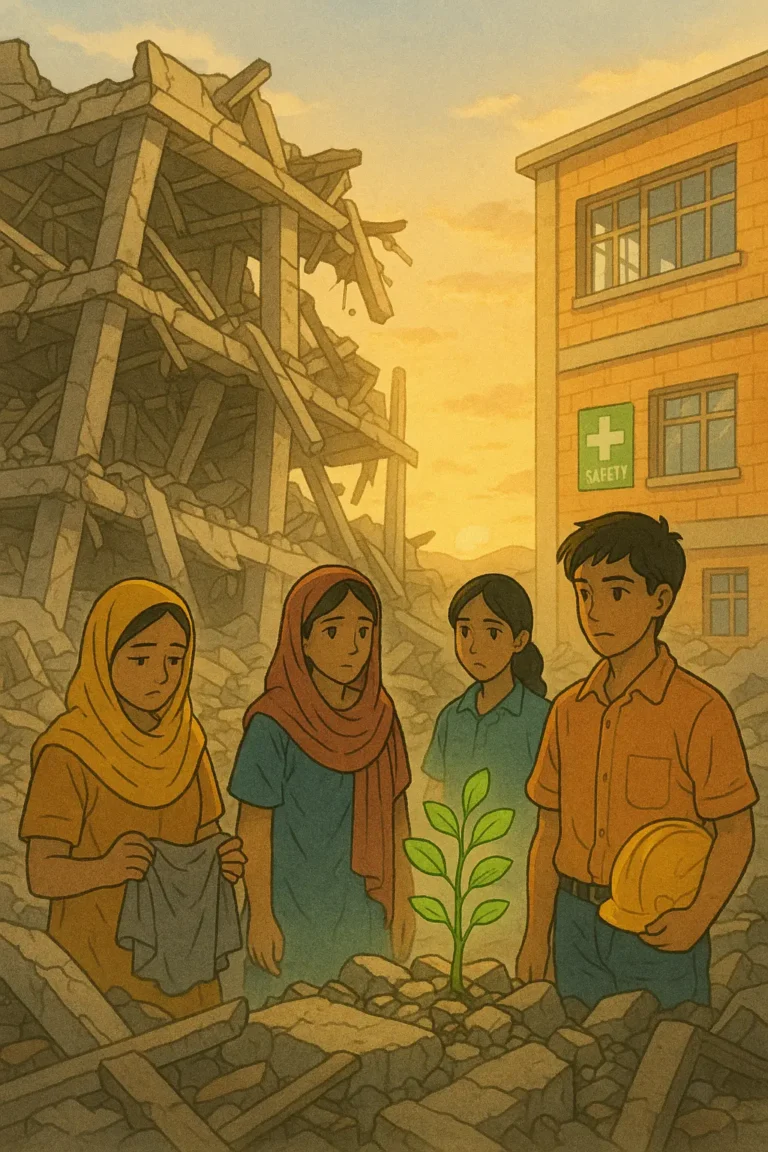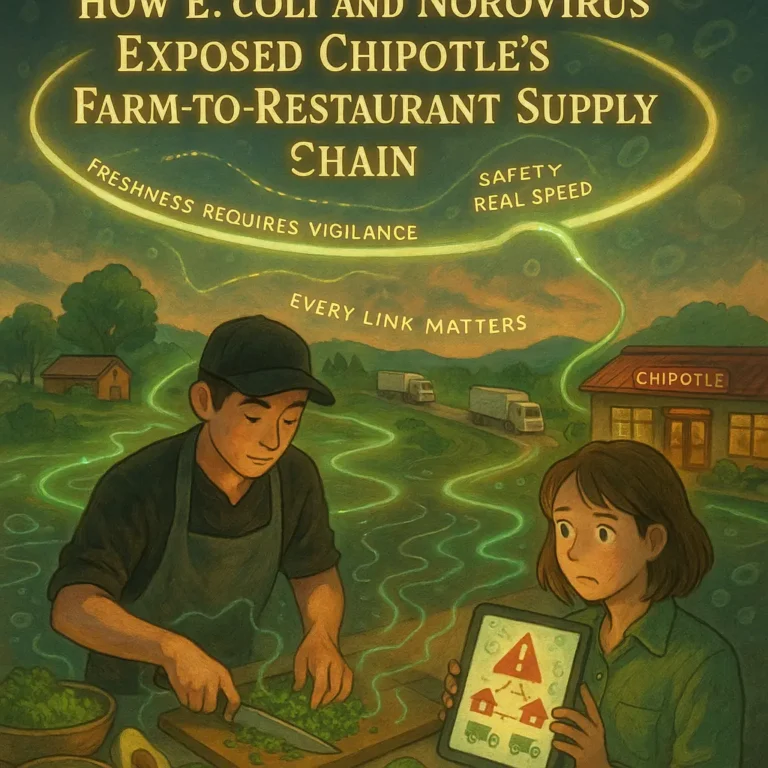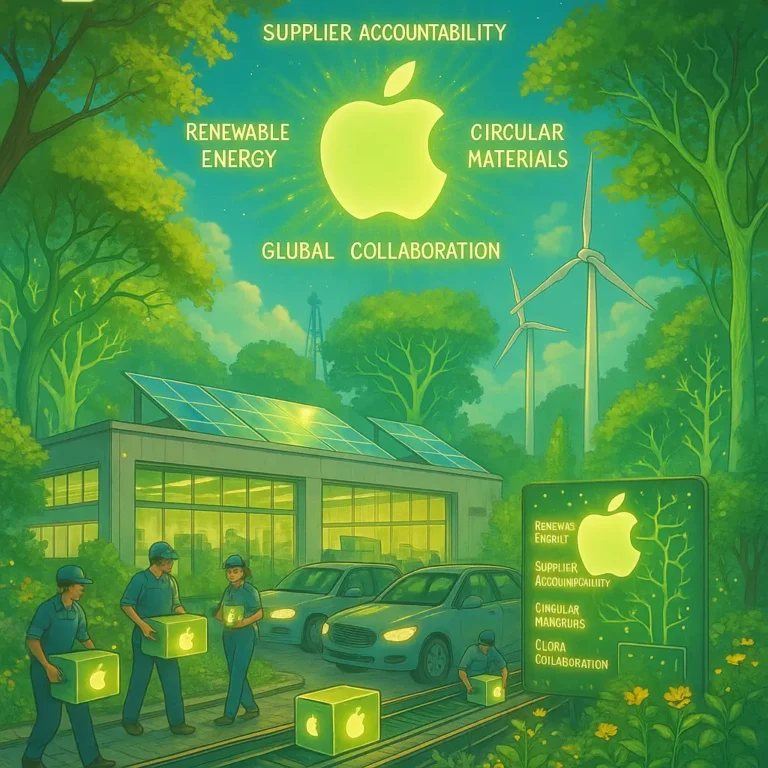
Starbucks’ Ethically Sourced Coffee
Starbucks’ ethically sourced coffee redefined the sourcing template for various companies, demonstrating what is possible when more supply chains prioritize ethics.
Article Brief & Key Nuggets:
- Starbucks reshaped its supply chain by linking long-term supply security with the well-being of its farmers.
- Through its C.A.F.E. Practices program, the company provides training, pays quality premiums, and donates climate-resilient coffee trees, creating a system where ethical sourcing drives performance.
- Today, 99% of Starbucks coffee is ethically sourced and verified by third-party audits.
- The program has improved farmer incomes, protected forests, and built climate resilience across more than 400,000 farms.
- African supply chains can learn to prioritize transparency, build traceable systems, and directly invest in producers.
Ethical Sourcing Is Not a Luxury, It’s Supply Chain Insurance
The coffee trade has long been a cautionary tale of broken promises and unstable pricing. For decades, farmers carried the risk while buyers controlled the reward. In supply chain circles, ethical sourcing was often viewed as optional—a nice-to-have, rather than a necessity.
But Starbucks flipped that script. The company proved that ethical sourcing could be a supply chain strategy, not just a public relations tactic.
By supporting farmers directly, paying premiums, and building resilient production systems, Starbucks has strengthened its coffee supply and made it more sustainable and resilient. And supply chains can take note.
Read more: Walmart’s Project Gigaton: The Story and Lessons Behind it.
Starbucks’ Ethically Sourced Coffee Was a Business Survival Decision
Starbucks turned to ethical coffee sourcing in the late 1990s—not because of a trend, but because its future supply was at risk. Deforestation, collapsing prices, and poor farming conditions were threatening the availability of quality beans.
The company partnered with Conservation International to test a new sourcing model in Chiapas, Mexico. The goal was to combine environmental protection with support for farmers’ incomes.
That partnership led to Starbucks’ creation of C.A.F.E. Practices, launched in 2004. It was one of the earliest verified sourcing systems in the coffee industry.
C.A.F.E. Practices set four requirements:
- Fair Labor – No child or forced labor. Safe, humane conditions.
- Transparency – Suppliers must show payment records down to the farm.
- Quality – Beans must meet Starbucks’ high standards for flavor and consistency.
- Environmental Care – No deforestation for new coffee farms. Conservation of water and shade trees.
Today, this program includes over 200 individual performance indicators and is independently audited by SCS Global Services. The company uses these standards not only to measure compliance but to guide continuous supplier improvement.
How Starbucks Achieved 99% Ethically Sourced Coffee
C.A.F.E. Practices was the rulebook. But Starbucks knew rules alone weren’t enough. The company’s leadership backed the established standards with real support at the farm level.
1. Farmer Support Centers
Starbucks built 10 regional Farmer Support Centers in Latin America, Africa, and Asia. Agronomists at these centers teach sustainable farming techniques, pest management, soil health, and shade growing.
These services are available free of charge to both Starbucks suppliers and non-suppliers.
In North Sumatra, a farmer tripled her coffee trees and doubled her yield by applying Starbucks’ methods. Across regions, this training helped thousands shift from chemical-heavy monocrops to biodiverse, shade-grown farms.
2. Financial Access
Starbucks recognizes that farmers need access to credit to invest in their farms (e.g. to buy fertilizer, plant new trees, or cover costs between harvests).
In 2008, Starbucks committed $20 million to farmer loan funds, and later expanded this commitment through the Global Farmer Fund, a $50 million financing program. These low-interest loans help farmers invest in irrigation, plant renewal, and fertilizer.
In times of crisis, Starbucks has also stepped up with direct relief. For instance, during the price crash in 2019, Starbucks released a $20M emergency relief fund to bridge the income gap for struggling farmers. This wasn’t charity—it was a bet on future supply stability.
By investing in farmers’ economic stability, Starbucks builds goodwill and a more secure supply base.
3. Tree Donations for Climate Resilience
Climate change is coffee’s biggest long-term threat.
Diseases like rust and erratic rainfall are destroying harvests across the tropics. To fight back, Starbucks committed to donating 100 million climate-resilient coffee trees by 2025.
As of early 2024, they’ve distributed over 80 million. These trees replace aging stock and are bred to resist disease and heat stress. The program boosts yields and delays the need to clear more forest for new plantations.
4. Premium Pricing and Traceability
A key part of Starbucks’ sourcing strategy is paying more for ethically produced coffee. Through its C.A.F.E. Practices program, suppliers must prove they pay farmers fairly, often above the commodity market price (“C price”).
Starbucks offers premium payments for high-quality, sustainably grown coffee, and adds even higher bonuses for suppliers who achieve top sustainability scores. This approach motivates better farming practices, helping farmers increase their incomes.
By requiring clear payment records and farm-level transparency, Starbucks ensures the money reaches the growers, not just middlemen. The goal is to make coffee farming profitable, fair, and traceable from farm to cup.
Read more: The Story and Lessons Behind Bolt Food’s Exit From Nigeria.
What Starbucks’ Ethically Sourced Coffee Decision Got Right
Ethical sourcing is only sustainable if it’s profitable for the farmer and reliable for the buyer. Starbucks figured out how to align those two outcomes. Here’s what worked:
- Empowered Local Actors: Instead of micromanaging from Seattle, Starbucks trained regional experts to support farmers on the ground.
- Made Traceability the Standard: Transparency wasn’t a bonus—it became a requirement. Knowing your coffee’s origin is now table stakes.
- Utilizing Ethics to Elevate Quality: Coffee grown under stringent environmental and labor standards consistently delivers better taste and consistency.
- Built Supply Chain Resilience: By donating trees and promoting climate-smart farming practices, Starbucks helped growers adapt, thereby securing future coffee volumes.
- Incentivized Compliance: Starbucks didn’t punish poor practices—it rewarded good ones. Farmers who improved their methods earned higher prices and gained better market access.
Today, Starbucks sources from over 460,000 farms. The company buys 3% of the world’s coffee, and 99% of that is verified as ethically sourced. That’s not marketing, it’s a logistics triumph.
Lessons From Starbucks’ Ethically Sourced Coffee Strategy
Starbucks’ experience with ethically sourced coffee offers several key lessons in sustainability and supply chain management:
1. Invest First, Benefit Later
Starbucks spent over $100 million on farmer loans, agronomy, and supply development. They treated coffee growers as strategic partners, not just vendors. In any supply chain, when you help your weakest link get stronger, you strengthen the whole chain.
2: Build Your Own Standards, Then Share Them
C.A.F.E. Practices wasn’t kept secret. Starbucks open-sourced it, which created a ripple effect across the coffee industry. Logistics teams should consider publishing their supplier codes, audit methods, and scoring systems to enhance transparency and accountability.
It drives up standards and trust.
3: Don’t Rely Solely on Third-Party Certifications
Starbucks didn’t hand off its ethical commitments to a label. The company designed its own system and then hired independent auditors to oversee it. That internal ownership kept the quality high.
4: Future-Proof Your Supply Chain
Starbucks planned for climate risk. The company funded research, bred resilient plants, and educated growers. That’s supply chain continuity. It’s not enough to source ethically—you must source sustainably.
Read more: How UPS’ ORION Algorithm Transformed Its Route Optimization.
How African Supply Chains Can Apply These Lessons
Africa can lead ethical sourcing if it builds for scale, not certification. Most African logistics professionals know the pain points—poor farm access, middlemen-driven pricing, and weak traceability.
Starbucks’ model for ethically sourced coffee shows how to tackle these one by one.
1. Build Region-Specific Ethical Standards
C.A.F.E. works because it fits coffee. African markets can also benefit from increased demand for cocoa, tea, cashews, and shea. Design standards for local needs, publish them, and enforce them.
2. Invest in Support, Not Just Rules
Create support hubs in key production areas. Offer hands-on training in quality control, sustainability, and traceability. Use a “teach to scale” model—train trainers, not just farmers.
3. Use Mobile and Blockchain Tools
Starbucks’ traceability model can work in Africa, too, especially with high mobile adoption. A scanned code should show origin, transport history, and payment data. That’s how trust gets built.
4. Tie Price to Practice
Africa’s buyers must stop paying only for volume. Pay more for clean, traceable, responsibly grown products. Create supplier scorecards. Make premiums visible and fair.
Sourcing Ethically Isn’t Extra, It’s Essential
Starbucks has proven that ethical sourcing fosters long-term reliability. Its success came from treating farmers as critical supply chain partners. The company didn’t fix every problem. But it built a repeatable model that others can apply.
For African supply chains, the question isn’t whether we can do this; it’s whether we should. It’s whether we can afford not to. In a world of climate shocks and heightened customer scrutiny, responsible sourcing is no longer a trend; it is a necessity. It’s a logistics requirement.

Obinabo Tochukwu Tabansi is a supply chain digital writer (Content writer & Ghostwriter) helping professionals and business owners across Africa learn from real-world supply chain wins and setbacks and apply proven strategies to their own operations. He also crafts social content for logistics and supply chain companies, turning their solutions and insights into engaging posts that drive visibility and trust.








